These days I’m experiencing a lot of stress, finding myself quick to cry, and noticing both tightness in my chest and shallowness of my breath. Undoubtedly, this stress is both personal and political, particular to me and shared in our collective. Conversations throughout the day address concerns about the Muslim ban and travel restrictions, ongoing deportations and abuses of power, challenges to health care, an unwillingness to look for missing black and brown girls, and countless other injustices.
At the same time as trying to understand these matters and to take action (and too-often feeling small and powerless in the process), I’ve got a lot going on and getting churned up in my personal life. As I approach my year of “up or out” for tenure and promotion within the university, I’m reminded of one mentor’s insight: “No one gets tenure without getting black and blue.” And here’s the interesting thing: my body is covered in bruises.
You see, when I had acupuncture and cupping earlier this week, my body bruised at almost every needle point. The cupping left darker circles than usual, and I’ve been adding to these bruises by bumping into furniture, walls, and other physical objects. I hadn’t made the connection to my mentor’s line about “getting black and blue” until my Reiki teacher, Marty Tribble, pointed out this literal, physical manifestation.
So, I looked in Louise Hay’s Heal Your Body app, and I found this information for bruises:

As is so often the case when I look in this app, the “probable cause” feels right. I am feeling (and internalizing the feeling) of many little bumps. And I am being awfully tough on myself: from scolding myself when I walk into walls (like I’ve done over spilled milk) to holding deeply onto ideas that I’m not doing enough (even when I’ve got sticky notes around my home saying “I am enough,” “I do enough,” and “I am worthy”).
I believe—no, I know—that self-love is of critical importance, especially for confronting white fragility and dismantling white supremacy. I know that “Only love can heal the wounds of the past” (hooks 5). I know that I can’t show up for others (in classroom, online, or activist spaces) if I don’t show up for myself.
So, I affirm new thought patterns:

Seeking Comfort as an Act of Cherishing Myself
Comfort isn’t a word I gravitate toward, as it seems to communicate stasis or a sense of being OK with the world as it is, instead of as it ought to be. I remember first becoming concerned about “comfort” when realizing that students sought this within classrooms, a space where “discomfort” is more typically the goal. As a colleague taught me during graduate school: “There’s no growth in the comfort zone and no comfort in the growth zone.”
Now I share this mantra often when teaching and mentoring, as it communicates the importance of valuing openness to learning, change, and growth (even when growing involves growing pains). As a learner and teacher, I want to be growing, striving, challenging myself, and reaching beyond what is to imagine and enact what could be. I believe there’s power in prioritizing growth for learning and unlearning, making and remaking, writing and rewriting. And the goal of growth typically runs counter to the goal of comfort.
More recently, I’ve begun questioning how my attachment to growth (and growing pains) may actually be a form of harshness or hurting the self. I cringe when I hear the line “there’s no gain without pain,” but I think I’ve subtly/subconsciously been holding onto this idea in my body. (Sorry, body! Sorry, Beth!) I’ve been willing to experience pain for productivity. I’ve been willing to push myself beyond boundaries (physical, emotional, and relational boundaries) that play important self-protective roles.
Seeing Louise Hay’s affirmations to be kind and gentle toward the self, I realize just how much I’ve been craving—truly, truly craving—a little comfort, as in snuggling closely and cherishing myself within a warm comforter (quilt/blanket). This isn’t to say that I don’t value growth or that I’m settling with the world as it is. In fact, quite the opposite: I hope to recognize and affirm the right to desire comfort, especially at a time when discomfort and growth are already defining everyday life. I suspect this is part of recognizing when greater kindness and gentleness toward the self is needed. I suspect this is part of self-care.
Finding Comfort in Food
So, if I’m seeking comfort, what is it?
Comfort (noun): a state of physical ease, freedom, contentment, or coziness; the easing or alleviating of grief or distress (example: “I found comfort and solace among friends.”)
Comfort (verb): to ease, console, support, strengthen (example: “The crackling fire comforted me after being soaked by the cold rain and gale-force winds.”)
When I think of these definitions, I see that comfort can bolster or build the strength, support, and readiness needed to make change, to grow, and to act on commitments. The trouble is if we stay with contentment or want only coziness. This sort of sheltering is what my colleague’s mantra warns against. The trick seems to be avoiding all-or-nothing thinking about comfort: not settling and also not disallowing.
Clearly, I don’t have the answer about when comfort is desirable and when it’s obstructionist. But I do have a strong sense that in the midst of current turmoil, I’m craving some comfort as a bolster. And the sort of comfort I’m especially craving is “comfort food”: those foods that are carb-loaded and heavy; those foods that remind me of the best, most loving memories from childhood; and those foods that fill me up and leave me feeling full.
“Comfort foods” are so often associated “guilty pleasures” that I’ve internalized a sense that craving these foods is bad or wrong. They’re typically often less nutrition-dense and less colorful. Yet, if I let go of these negative associations (like my negative associations with “comfort” more generally), I can appreciate my body’s wisdom.
Specifically, I crave comfort foods at times when I feel ungrounded, disoriented, or overwhelmed—as though too much growth has me tilted off balance, threatening my ability to stand firmly rooted and tall. And comfort foods (at least for me, and I suspect for many others) tend to include potatoes and other “root veggies” as well as tomatoes and other red foods. What’s so interesting is that foods from the ground (roots!) and foods that are red similarly represent the root chakra. I am totally amazed at my body’s wisdom in asking for the foods that will provide grounding support, that will help me get connected to the earth, even if only by feeling weighted down.
Recently, for example, I’ve been eating the following comfort foods (all vegan and gluten-free):
- Grilled cheeze-and-tomato sandwiches with tortilla soup
- Refried beans with roasted root veggies
- Tomato and pea stew
- Cherry and cranberry smoothies
- A favorite potato and kale casserole—a vegan twist on my mom’s “ham, cheese, and potato casserole” that I enjoyed as a kid.
It’s this casserole I’d like to share with you, as it’s been nourishing and healing me these past few days. (And how appreciative I am for leftovers as I write!)
Potato & Kale Casserole (vegan + gluten-free)
Ingredients:
- Several potatoes (3-6, depending on size and type)—sliced for layering
- Bunch of kale—pulled apart into bite sizes
- 1 cup of shredded vegan cheeze—my favorite for casseroles is Daiya cheddar shreds
- 2 tablespoons of vegan buttery spread—my favorite is Earth Balance
- Creamy sauce—when I don’t have time to make my own, I use a full jar of Victoria Vegan’s Alfredo Arugula Pesto
- 1 cup of almond or other plant-based milk—to pour lightly over each layer
- Salt and pepper—to lightly cover each layer
- 1 teaspoon of safflower or other high-heat oil—to grease casserole dish
Optional Add-ins:
- Additional greens (e.g., spinach, chard, or a larger amount of kale)
- Mushrooms
- Onions, shallots, and/or leeks
- Crumbled tofu or tofu ricotta
- Textured vegetable protein
- Crushed nuts or no-harm parm
Preparation Time:
- 30 minutes, including time cleaning vegetables and slicing potatoes
Cooking Time:
- 1 hour at 375F covered and then 15 minutes uncovered at 425F degrees
Instructions:
- Wash and then thinly slice potatoes.
- Wash and pull apart kale into bite-size pieces.
- Rub safflower oil, other high-heat oil, or even the buttery spread along the bottom and sides of the casserole dish.
- Spread a thin layer of the creamy sauce along the bottom of the casserole dish (just enough to moisten the first layer of potatoes).
- Begin to create layers: first, by laying out potatoes side-by-side, as shown in the photos below.
- After this first layer of potatoes (and after each additional layer), distribute 8-10 dollops (small bits) of the buttery spread across the potatoes.
- Sprinkle salt and pepper atop this layer, and then add either another layer of the creamy sauce or the vegan cheeze.
- Add a layer of kale (typically I use half the kale, though it’s possible to have a single, fuller layer of kale and to use it all at once).
- Then lightly pour the almond or other plant-based milk atop the casserole so that it soaks down into existing layers.
- Create a new layer of thinly sliced potatoes.
- Repeat steps #6-#9—adding buttery spread, salt and pepper, creamy sauce or vegan cheeze, and kale; then lightly covering the full casserole with plant-based milk.
- With remaining potatoes, create a top layer (typically, my casseroles have this third/top layer of potatoes, but if you’re running short on ingredients, you can certainly adjust the recipe and create two layers).
- Finish the casserole with salt, pepper, and a top layer of vegan cheeze. Be sure to add enough cheeze shreds to cover the potatoes so that the top becomes crispy.
Rationales:
- Casseroles are incredibly forgiving. Both ingredients and cook times can easily be adjusted. Only a couple of potatoes at home? No problem: make fewer layers.Want more veggies? No problem: try variations. Need to cook at a particular oven temperature? No problem: just leave the casserole in for more or less time. In the past, I’ve seriously over-cooked casseroles, and they’ve still tasted great. I’ve made them both skinny/thin and stuffed/spilling-over-the-edges, and they’ve forgiven the poor composition.
- Casseroles allow a lot of flexibility. In addition to being easily modified with different ingredients, cook times, and compositions, casseroles can be prepared hours and even days ahead of time. If I make a casserole Saturday morning, I can cook it that evening or on Sunday or Monday. And because casseroles make a good amount of prepared food (at least in my household of two people), we can eat leftovers for a few days. This means we can enjoy the casserole now, later, and both now-and-later.
- Casseroles invoke memories. Growing up, my mom would cook on weekends, and I have memories of Saturday evenings around the fireplace, often wrapped in a heavy blanket—an actual comforter. Among my favorite meals were chili, lasagna, soups, and this potato casserole. To this day, I associate casseroles with Saturday evenings. I know it’s a blessing that I can associate food with love, and for that blessing, I am grateful. Stepping into gratitude, I see how privileged I am (in both the negative and positive senses of the word privilege) for the ability to seek comfort and to create vegan-friendly comfort food.
- Casseroles are filling. At times when I’m seeking comfort food, I’m often feeling vulnerable, shaky, off-balance, and in need of support. Because casseroles are tasty (so I eat a lot) and heavy (densely packed with carbs and fats), they leave me feeling filled up and full—literally and metaphorically weighted down. Through grounding, I regain my footing. And with firm footing, I’m ready to root down to grow tall. I’m ready for more growth. I’m recommitted to the long haul toward justice.

—
This post is written by Beth Godbee for Heart-Head-Hands.com. For more posts like this one, you might try “Banana, Chocolate, and Peanut-Butter Mash: Changing My Relationship with Sugar and Rethinking Self-Care,” other vegan + gluten-free recipes, or the series of posts answering why I’m vegan. Please also consider following the blog via email. Thanks!

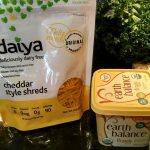
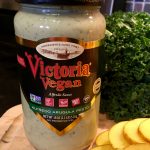
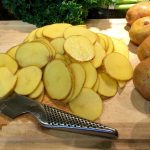
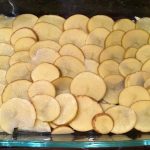
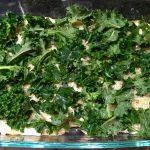
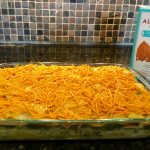

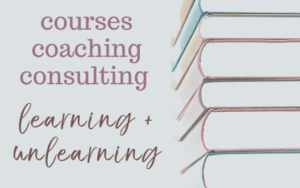
This looks so good! Yum!
My favorite so far! Tilted was misspelled…
Sent from my iPad
>